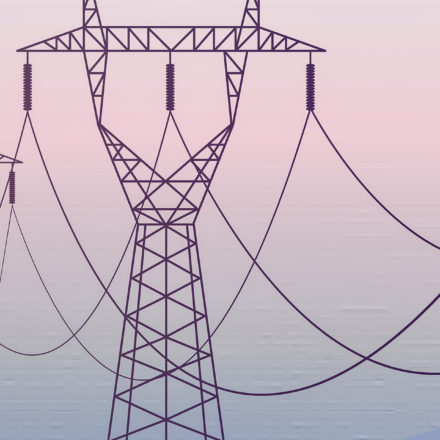Claire Rogers, David Olsson and Alessio Tripodi consider the benefits of collaboration to build Australia’s grid and transmission infrastructure and develop carbon markets. The transition is global, and working together is essential to meet net zero goals.
Recent news reports have highlighted concerns that Australia will fall short of its goal of reaching 82% renewable energy by 2030, largely due to delayed transmission grid developments. Others are more optimistic.
But whichever camp you’re in, there are benefits to accelerating efforts to transition to a net zero economy. And while solutions are multi-faceted, at least one overarching approach could help to accelerate the transition to net zero: collaboration.
KWM head of climate and ESG Claire Rogers recently shared her insights on the potential gains for Australia from collaborating with its Asian neighbours at an industry event hosted by the Australia China Business Council (ACBC). KWM international director and ACBC National President David Olsson similarly championed the need to work together.
Here, we share their take on two areas (among many) that could benefit from a collaborative approach: the energy transition and carbon markets. You can watch Claire and fellow panellists, along with David, at the session in full on YouTube.
The renewable projects that have to happen (but aren’t) – and the need for grid and transmission upgrades
Australia and China share similar challenges when it comes to energy infrastructure, due to historical reliance on fossil fuels and populations concentrated in areas far from where energy is generated. The critical challenge is to build out grid and transmission systems to enable the connection of new and emerging renewable energy.
China – buoyed by government initiatives, including subsidies and pressure on governance – has built utility-scale solar capacity (228 gigawatts) surpassing that of the rest of the world combined. Its wind capacity (310 gigawatts) has doubled between 2017 and 2023.
In Australia, the journey has been more onerous. Grid and transmission infrastructure limitations have held up the completion of renewable projects. Just four renewable energy generation projects secured financial commitments during the first six months of the year, the Clean Energy Council said, the lowest level since the green group began collecting data in 2017.
One reason for projects stalling is the supply chain. Positioned at the end of the global supply chain, Australia is competing with the world for essential technology and equipment. And its why we need to look at how we can build those relationships and manage that cooperation.
What we can learn from China – and the benefits of collaborating
Collaboration between Australia and China presents an opportunity for knowledge exchange and technological advancement. Leveraging China’s experience and expertise in manufacturing solar PV – as the largest manufacturer of solar PVs – and wind turbines could alleviate supply chain concerns in Australia, accelerating project completion.
There are also a lot of opportunities for collaboration in developing an advanced transmission system that efficiently transports renewable energy, ensuring a stable and sustainable energy supply.
Energy storage is another key aspect for both China and Australia, along with potentially game-changing transportable clean fuels such as green hydrogen.
“We are competing with the rest of the world at the moment because everyone is looking to build out their renewable energy capacity. Everyone is looking for the same pieces of technology and equipment, and it is hard for us to compete in Australia.” KWM Partner Claire Rogers
The benefits of a global carbon market – and helping nations across Asia develop their own
Carbon markets are another avenue for cooperation between Australia and China, and others globally.
China has the world’s largest carbon market in its national mandatory scheme covering power plants. It also has regional mandatory schemes and voluntary markets. Australia similarly has a mandatory national carbon offset system, which is also open to voluntary trading by companies not caught by the Safeguard Mechanism regime.
“We all share the same atmosphere. Ultimately moving to a scenario where you have a global market for carbon, so that you are taking carbon out at the fastest rate and in the most economically efficient way possible, has to be the logical way forward.” KWM Partner Claire Rogers
Australia’s own carbon offset system cannot fulfil the growing demand as the government and an increasing number of companies target net zero. This gives Australia a vested interest in helping other countries within the region set up systems. Collaborative initiatives with neighbouring countries like China and others in the region could help to create high-quality carbon units. The focus should lie in establishing transparent and robust systems that ensure high quality, credible offsets.
The potential for co-operation extends beyond carbon offsets. The trading and financing mechanisms associated with carbon units present an opportunity for shared learning and innovation. By collaborating on these fronts, Australia and China could not only meet respective emissions targets, but contribute significantly to global emission reduction efforts.
What the world needs now is collaboration
In the pursuit of a sustainable future, Australia and China are grappling with similar challenges. Sharing knowledge, experience and innovation would help to unlock opportunities and accelerate the transition. The need for a stable energy supply and the urgency of combating climate change make this collaborative venture not only logical but imperative.
As we tread the path towards a sustainable future, working together is not just an option — but a strategic necessity for the global community at large.
“We will all get there faster if we do it together there’s no point all of us trying to solve the same problems on our own. If all the steel manufacturers in the world can get together and form a Consortium to look at green steel manufacturing, then surely there’s hope for everyone else.” KWM International Director and ACBC National President David Olsson
Want to know more about the opportunities from collaboration on climate change? See:
- Our Climate Report, prepared in collaboration with the ACBC.
- David’s insights on the benefits of cross-border cooperation, including:










